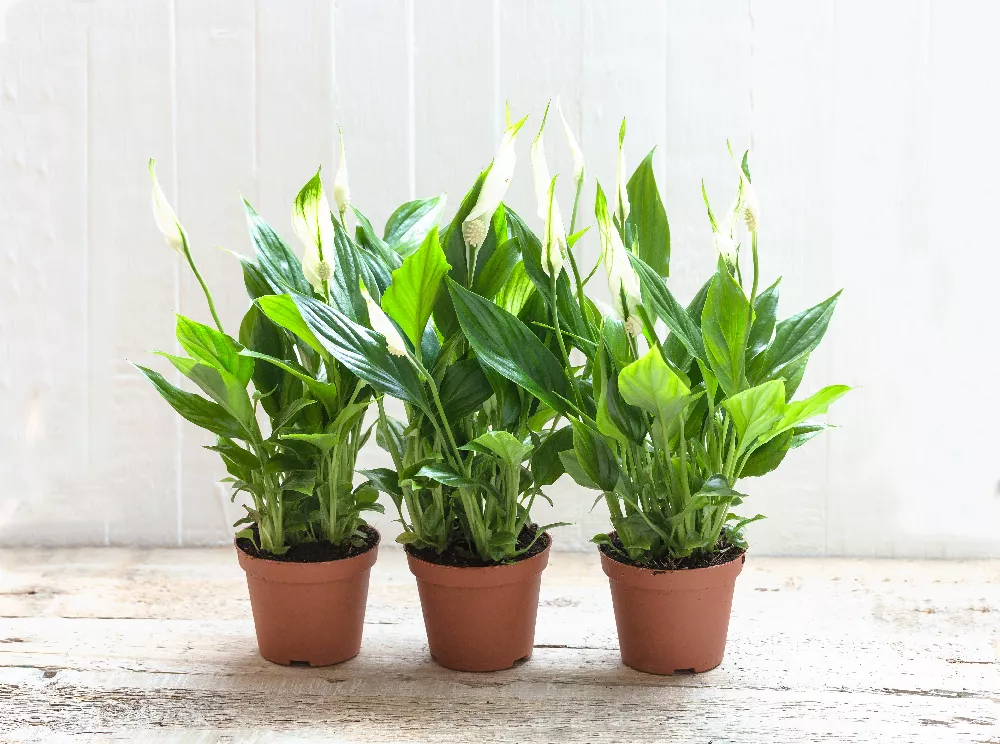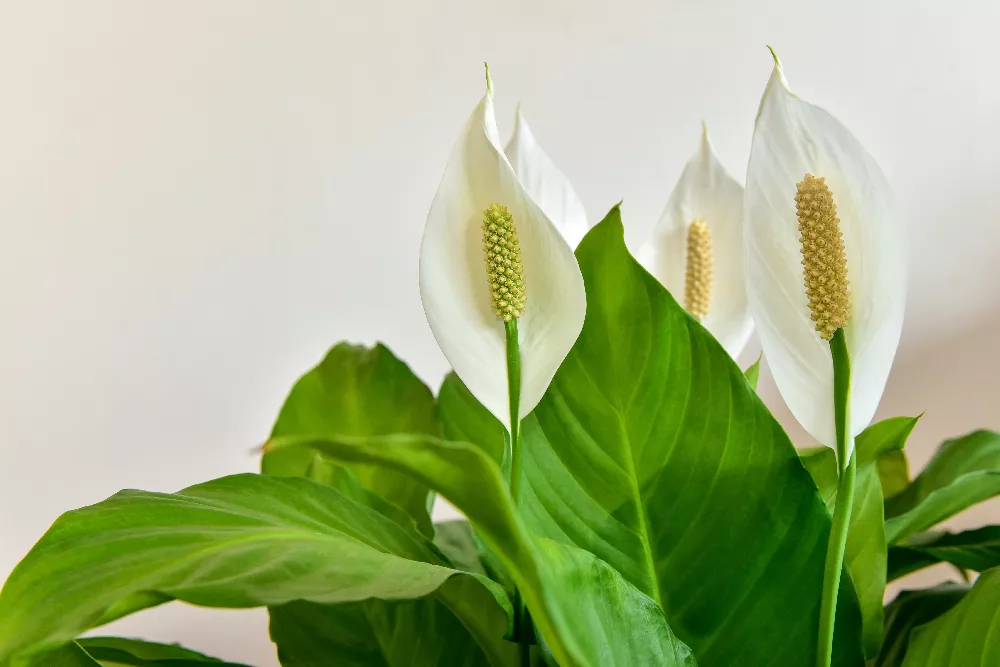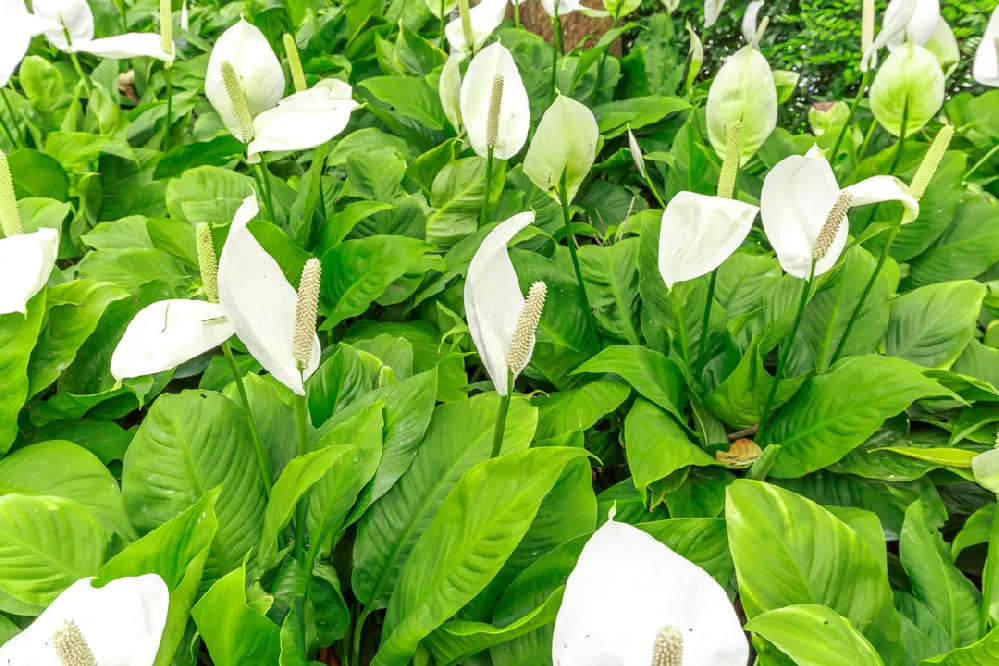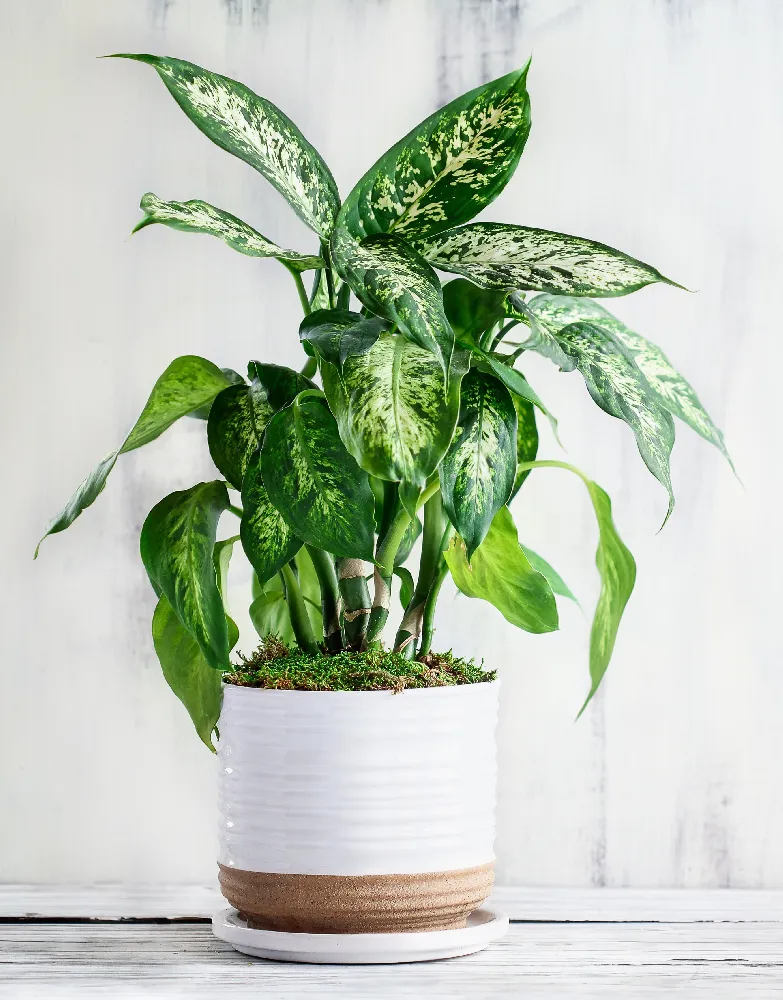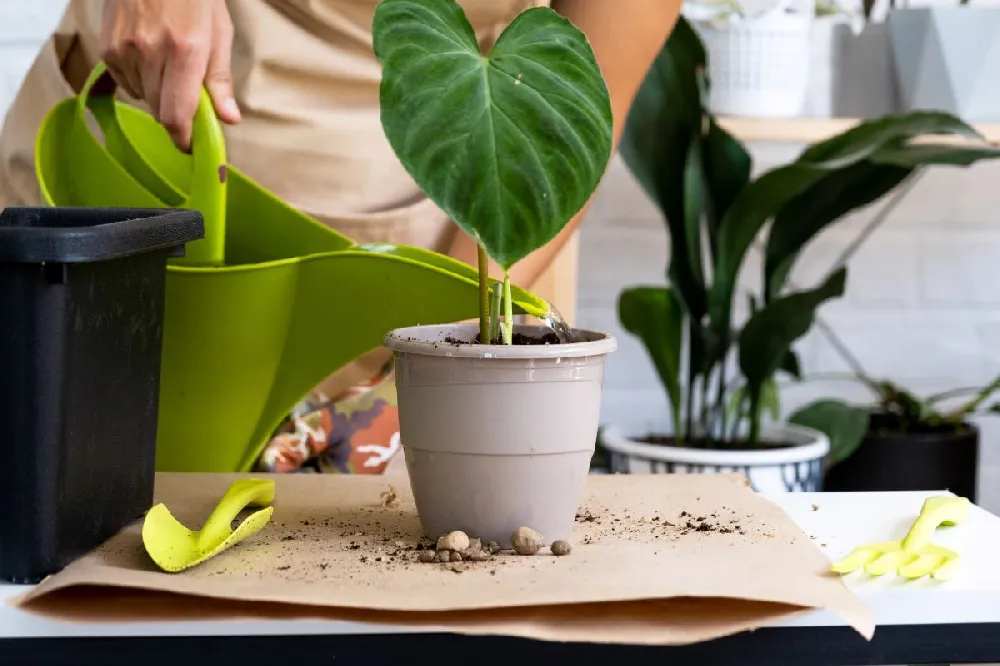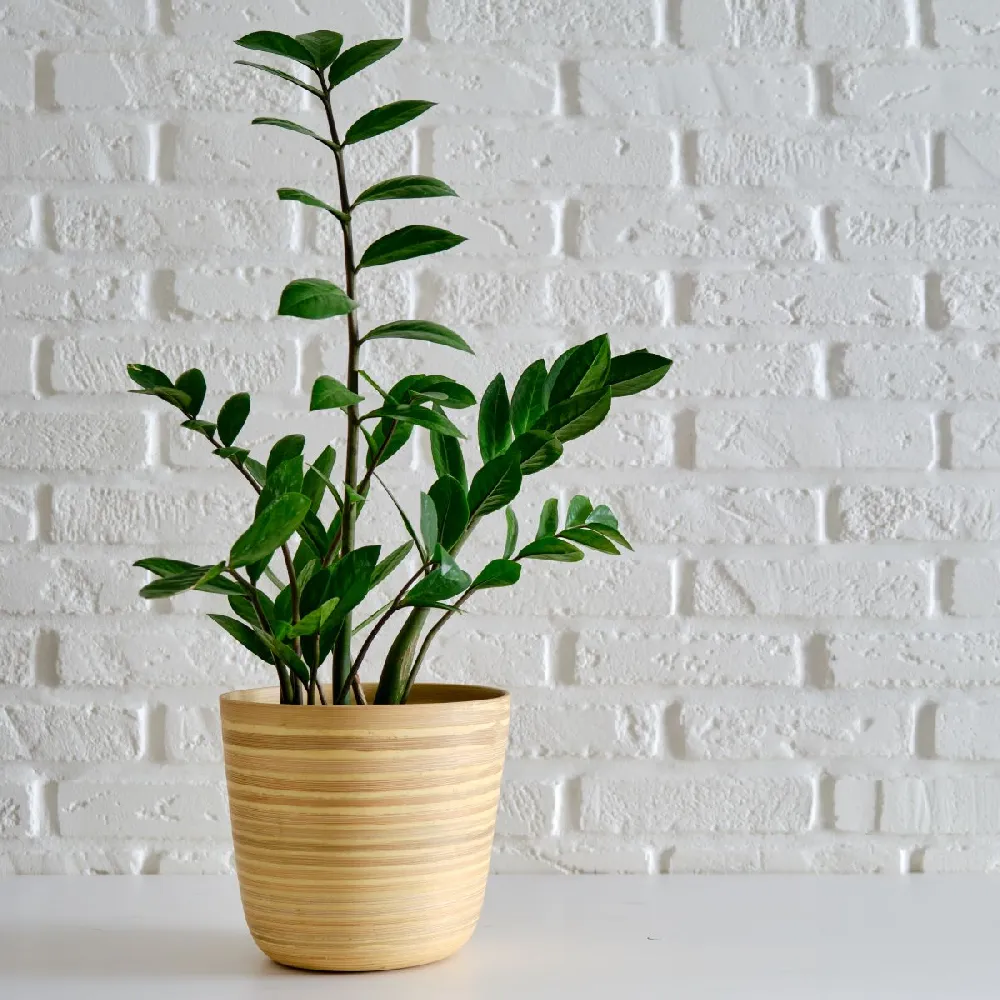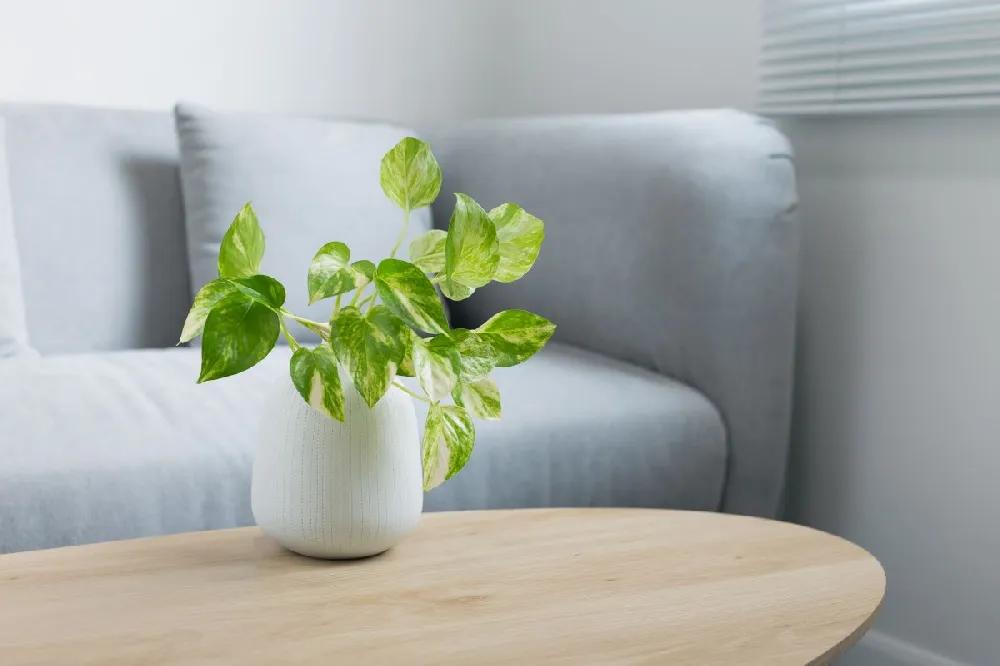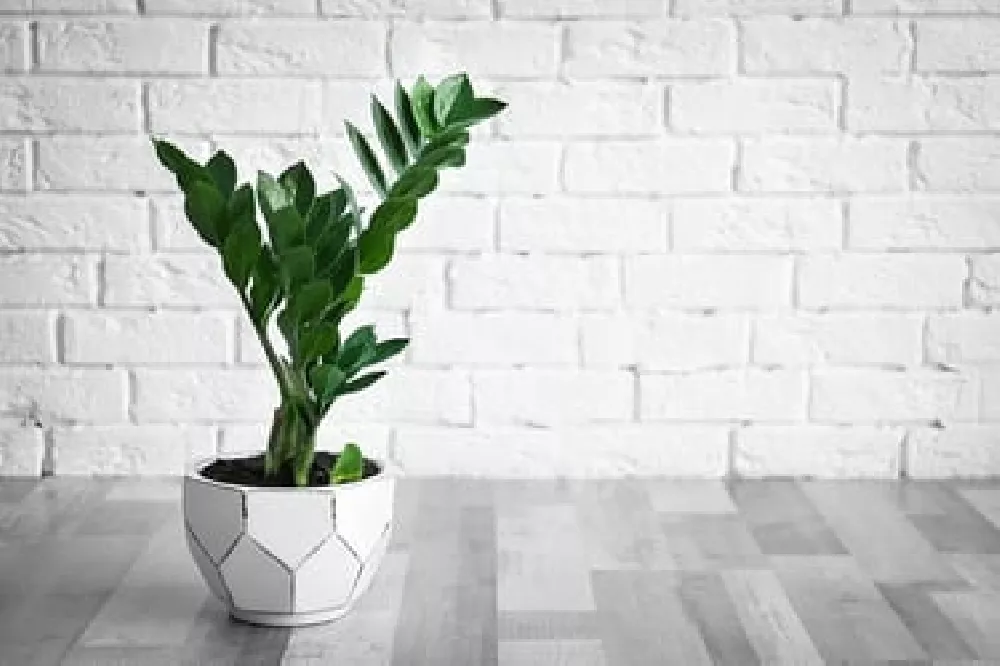Peace Lilies for Sale - Buying & Growing Guide
- Ships in 1-2 days
- 1-Year Warranty Eligible
- Pots or accessories are not included unless specified in the product options.
Shipping Details:
Once your order is shipped, you’ll receive an email with a tracking number and estimated delivery date. Most orders ship immediately, but some items are seasonal and may only ship in spring or fall. These products are noted on the website.
The Peace Lily (Spathiphyllum spp.) is well known for its striking fluted flowers (spathes), which look similar to a calla lily and its attractive glossy, green foliage. This plant is perfect for indoor landscaped areas or in darker rooms where sunlight is limited. A few interesting details about the Peace Lily include:
- Its flowers emit a distinct smell that attracts pollinators.
- Peace Lilies are highly desirable in the practice of Feng Shui.
Plant Care
Sunlight

Thrives in indirect light. Keep away from direct sunlight.
Watering
Water occasionally at the base of the plant, making sure the pot drains well. Avoid overwatering.
Fertilizing

Use a fertilizer designed for houseplants or tropical plants. Taper off feeding during the winter.
Planting and Care
Planting instructions
Peace Lilies can be planted outdoors in-ground or in patio containers in zones 10-12. All other zones should grow them indoors. Plants should be planted in a shady area. The ideal daytime temperature range should be 68 to 85 degrees Fahrenheit, with nighttime temperatures being 40 to 55 degrees Fahrenheit. Soil should be moist but well-drained. Avoid planting in areas where water pools or floods. When planting, be sure to space them about three feet apart.
For outdoor/indoor container planting, place your Peace Lily in a well-draining container that’s about three to five inches wider than the root ball. These plants require very little fertilizer. It’s best to avoid top shelf potting mixes as they contain fertilizer that may burn the roots. Make your own potting mix using a mixture of peat moss (40%,) vermiculite (20%,) pine bark (20%), and perlite (20%.)
When grown indoors these plants should be placed in low-light areas and out of direct sunlight.
Watering and nutrients
Peace Lilies do best when the soil is moist; however, be careful not to overwater. Bring tap water to room temperature to ensure that any chlorine in the water settles. Alternatively, use bottled spring water at room temperature. When watering, be careful to water at the base of the plant, avoiding getting the leaves wet.
Fertilize Peace Lilies with a very light application of fertilizer one month after planting with a balanced fertilizer (10-10-10) that has been diluted to a quarter of its usual application strength. Reapply fertilizer (diluted) about every six weeks.
Pollination
In the center of the Peace Lily flower is a “spadix” (a conical protruding floral spike containing minute flowers.) The spadix is where pollen is either released or received. Females receive pollen, whereas males release pollen. Flowers last up to about 10 days, and during this time, they emit a soapy odor during the morning that attracts bees. Up to three pollinating bees claim ownership of one flower and return to that flower each morning during the 10-day flowering phase. Once the flowers have reached the end of flowering, the soapy odor emittance ceases signaling to the bees to go to the next Peace Lily flower, spreading pollen from the previous flower to a new one.
Pruning
It will be easy to know when to deadhead flowers because, after ten days of flowering, they fade from a creamy white to green and begin to wilt. To deadhead, follow the flower stalk to the base of the plant. Using sharp, disinfected pruning shears, cut the stalk just above the soil, and remove.
The foliage will require some mild pruning when leaves become discolored (yellow/brown) and wilt. Sometimes the discoloration and wilting may indicate it’s not getting enough water or too much sunlight. As the plant grows, it’s also natural for the leaves to turn yellow and wither. Either way, it’s essential to remove the dead/decaying leaf to promote new growth. This can be done using disinfected, sharp shears cutting either the discolored portion of the leaf or the entire leaf (making a 45-degree angle cut at the base of the petiole.)
Pests and diseases
The Peace Lily requires little maintenance and has few problematic pests or diseases. It’s not unusual to find mealybugs or brown scales on your plant. To remove mealy bug infestations, use a cotton ball soaked with rubbing alcohol to wipe away mealy bugs. To remove scale insects, scrape the insect bodies gently off the surface of the leaf.
Peace Lilies may be susceptible to Cylindrocladium spathiphylli (a type of root rot). This is a disease pathogen transmitted from plant to plant through contaminated water. Symptoms include lesions (red/brown) on the roots and a decaying appearance. Secondary symptoms of this pathogen manifest as yellowing leaves.
Peace Lilies also may be susceptible to Phytophthora, a soil-borne fungal disease that causes leaf spots and root rot. Black lesions form on the leaves, and wilting occurs. Prevention of diseases can be accomplished through cultural controls such as distancing plants from each other and avoiding placing them in a communal watering tray. Once a plant becomes infected with Phytophthora, it’s best to discard it.
Light
Although they can tolerate fluorescent light, lilies thrive better in partial shade. They can flourish even in a room without a window.
Moreover, Peace Lilies can react to light, so it’s easier to monitor them as regards lighting.
When the light that goes to them is too strong, this plant will sprout yellow leaves or show up brown leaves when placed under direct sunlight. Their tender leaves tend to singe from the effect of direct sunlight.
Soil
Lilies naturally draw nutrients out of the soil. Therefore, the choice of soil and how you prepare it is absolutely important for the survival of your plant.
It’s important to note that the nutrients inherent in the soil cannot be replaced by fertilizers.
This is why it’s generally recommended to re-pot your plant every year or two so you have the opportunity to present a new source of nutrient to your plant.
As you know, you can continue to fertilize the old soil. However, keeping it for too long may create salt/chemical deposits that may harm your plant.
Repotting regularly also ensures you’re providing the maximum amount of nutrients for your Peace Lily to survive on. And you’ll also be able to decide whether to move the plant to a bigger pot.
The benefit of that is it will keep your lily from becoming root bound when left in the same pot for too long.
Humidity
Where do Peace Lilies thrive?
In a tropical jungle, where it’s warm and sultry. To replicate this condition, you can mist the plant with lukewarm water – you can do this daily, or three times a day, depending on your plant’s needs.
Try to mist the leaves of the plant regularly so as to improve the humidity and keep the plant in a solid state.
A good idea is to use an air humidifier if you feel you can’t do it manually. This should work well and free you from having to worry about the air humidity around your plant, every time.
Propagation
The best method is to do propagation by division, where you separate sections of the original plant. You do this by dividing the root clump in the middle of the mother plant so that each segment is separated.
You then place each part in a separate container. Dividing every 2 years will have a positive effect on your plant’s bloom.
Usually, the number of plants you wish to grow will determine how many places you divide the original plant as well as how many crowns the mother plant has.
If there are plenty of crowns already, you can separate them into more divisions, if not, you can make do with two or three.
You can cut away section from the old plant by using a sharp knife or take it away by hand gently. In order to propagate successfully, you need to ensure that the new crown has at least two leaves with roots attached.
And before you put it in a new pot, check the foliage and roots and remove brown tips or any loose part.
Repotting
You should repot your lily if roots appear on the surface or start growing through drainage holes. This may happen about once per year, and it’s easy to do.
Repotting may also be needed if the root of your Peace Lily starts growing round in a circle and not performing very well, you may need to loosen those roots up a little bit.
Don’t worry about the new one being fragile because they can actually take well to a new environment. The new container should be an inch to two inches bigger in diameter than the original pot.
Make sure you add enough soil to the bottom of the new pot to raise the plant to its original height. It’s important to cover the roots well so you don’t leave any air pockets.
This will give a lot of space for the roots to stretch out, grow, and allow more water to be held by the soil so that the plant isn’t going to dry out too quickly.
You can use the soil from the old pot. Also, make sure the new pot is not too big if you are doing a small transplant. Remember a warm and comfortable root brings about blooming in Peace Lilies.
FAQs
Is the Peace Lily plant safe to have around pets?
How large will a Peace Lily plant get?
These plants grow up to six feet tall and five feet wide. The cultivar ‘Sensation’ may grow to be the size of a small tree with a six-foot height and flowers two to three times the size of a hand. Gardeners living in states such as Florida enjoy these large plants on their shaded patios and indoor atriums. The cultivar ‘Little Angel’ is a smaller species.
Do Peace Lilies come in any other color other than white?
The flowers on a Spathiphyllum spp. (Peace Lily) only bloom in a creamy white color. As new flowers appear on the plant, they will have a green appearance until fully bloomed. Many mistakenly refer to a different plant, Anthuriums, as Peace Lilies. Also known as the flamingo plant, (Anthurium spp.), this plant is often mistaken as a “red” or “pink” Peace Lily. However, Anthurium is a completely different genus.
Where do Peace Lilies originate?
Native to the tropical regions of Central America and Asia, Peace Lilies are found as understory plants in warm, humid wetlands such as rain forests and jungles. It’s not uncommon to find these plants growing wild in tropical climates along rivers and streams. Beyond their native environment, they can be found in many shopping malls and are often planted near water features. The humidity and temperate climate provide the ideal environment for keeping these plants healthy indoors.
Aren’t Peace Lilies symbolic of sympathy, making them common at funerals?
Interestingly, this plant is the most common plant sent to funeral homes and loved ones. As legend has it, Peace Lilies are commonly sent to the grieving because the plant symbolizes the departed’s soul being taken back to a place where innocence is regained.
Compare Similar Products
Customer Reviews
 Beautiful Peace Lily
Beautiful Peace LilyThe plant is huge and arrived in perfect condition.
